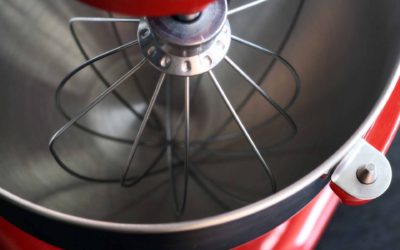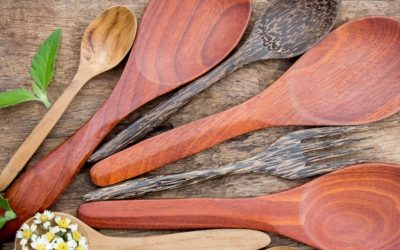5 Steps to Cutting Food Waste from Your Kitchen
August 15, 2017Food waste is a problem around the world.
Taking steps to prevent food waste in your kitchen doesn’t just make your restaurant more morally strong; it can also help you save money on ingredients and attract more customers. Here are some steps you can take to reduce food waste in your kitchen.
1. Track Your Food Waste
Tracking is the first step because it shows you whether you are making progress on reducing your waste. It also helps you to find out where the waste is coming from. Create a team that specifically looks for food waste at the end of each day. Also ask staff members to take notice of where the most food waste they see is coming from.
Your team is your best asset.
2. Educate Your Staff
You know how we said your team is your best asset? Well, they can’t be your best asset if they don’t know what is going on or how they can help. Educating your staff on the benefits of reducing food waste and what they can do to help will get them ready to be a part of the operation to cut your food waste.
3. Start Composting
Composting turns food waste into healthy soil additive. Many cities have started programs where residents and restaurants alike can compost. You simply separate all your food waste and send it to a compost facility. If your city doesn’t offer it, there are private companies and farms that will accept food waste to help them create fertile soil.
Composting allows your food waste to go towards creating something productive.
4. Incorporate Leftover Food in Meals
If you find you have a bunch of vegetables left over during the day, consider throwing them into a soup and serving it as a special. Adding some flexibility to your menu items can also give you the freedom to use foods that otherwise might end up in the trash. For example, having a salad on your menu that includes “seasonal vegetables” allows for different variations of the same menu item, allowing you to get more out of your kitchen ingredients.
5. Measure Types of Food
Sure, you have food waste, but what kind of food waste do you have? Is it lettuce scraps? Unused pasta? Knowing what type of foods you have left after a day of hard cooking lets you know what you can do with it. Is it food you could incorporate into other meals? Is it inedible and needs to be composted? Is it something you could provide to those who are homeless?
By measuring your food waste and separating it, you can determine what needs to be done.
Properly reducing and reusing food waste will help your restaurant become more sustainable. It will also attract the crowd of diners that appreciates the fact you are doing your best to help the environment.
5 Keys to Creating the Perfect Restaurant Seating Areas
Restaurants are about so much more than just food. From the setting and layout of your restaurant to your choice of colors, it takes a lot more than an appealing menu to keep diners coming back for more. When setting up your restaurant, booths and chairs are important...
5 Essential Buying Tips for Your Next Food Prep Work Table
The right foodservice equipment is pivotal to the efficiency of your kitchen. One of the most important types of foodservice equipment for any kitchen is the work table. With limited room on countertops available for your food prep needs, the cooking process can drag...
Tips for Keeping Your Commercial Sink Sparkling Clean
Your commercial kitchen, just like your personal kitchen, must be kept clean at all times. With all of the cooking and food processing you do, it is inevitable that your sink gets messy. Cleaning up your commercial kitchen is incomplete without proper cleaning of your...
Food-Cutting Secrets to Beautiful Dishes
In the restaurant industry, presentation is often said to be just as important as the food itself. Using the right knowledge, skills and restaurant supplies, you can incorporate creativity into your presentation, making guests feel that they are getting something...
Top Space-Saving Tips for Commercial Kitchens
Top Space-Saving Tips for Commercial Kitchens Space is always an important consideration when setting up a kitchen, and this is even truer for commercial kitchens. With a strong focus on functionality and the kitchen supplies that meet the needs of your commercial...
5 Ways to Get the Most Out of Your Mixer
No one wants to eat off of dirty or tarnished silverware. A stand mixer is a highly useful piece of kitchen equipment to invest in. Although this type of kitchen equipment does not usually come cheap, it can last a lifetime when properly cared for. Despite all your...
Restaurant Prep Tool Selection Simplified
What’s a restaurant kitchen without high-quality prep tools that can withstand the pressure of frequent use? Whether you already have a restaurant you’re running, or you’re just planning to launch one, one vital factor that could make or mar your business is how you...
Beginner’s Guide to Choosing a Commercial Ice Cream Freezer
Ice cream is a delicious and appealing desert treat for everyone, young or old. Having made the decision to sell ice cream to your customers, whether you have a restaurant, convenience store, or specialty ice cream parlor, it is time to begin stocking up on the right...
How to Choose the Right Kitchen Scales for Your Restaurant
A food scale is an essential item in every restaurant’s store of kitchen supplies. Designed to take the guesswork out of food measurement and maintain consistent food serving sizes, food scales are indispensable kitchen supplies in the commercial kitchen. With such a...
Beer Chilling Systems: Which Type Is Right for My Restaurant?
A refrigeration unit is integral to the functioning of any restaurant. Beers are best served cold - there’s no questioning that! But which beer chilling system is the best? From reach-in coolers to glycol chillers, a beer chilling system is an important piece of...
What Equipment Will I Need to run a Food Truck?
There’s a lot of planning that goes into starting your own food truck business. Before you hit the road with your delicious food offerings, you’ll need to fill up your truck with all the right foodservice equipment. Considering the lengthy list of possible items to be...
8 Types of Food Thermometers: What You Need To Know
Food thermometers are essential restaurant supplies for your commercial kitchen. They ensure that foods prepared in your commercial kitchen are cooked to the right temperature and held at that temperature for as long as necessary to kill any harmful bacteria. This...
How to Identify the Best Food Processor for Your Needs
Highly versatile and extremely efficient, food processors are designed to take away the hard work from repetitive kitchen activities. This type of cooking equipment can quickly become an invaluable tool in your kitchen. From chopping, to shredding, grinding, mincing,...
6 Keys to Choosing the Best Chafing Dishes for Your Restaurant
The chafing dish, also known as the chafer, is an essential piece of restaurant equipment for any establishment that wants to keep food hot. This type of restaurant equipment gets its name from the French word, chauffer, which means to heat, and it’s easy to see why....
Turning up the Dial on Commercial Fryers: How to Choose One for Your Restaurant
Fried food is a well-loved favorite. This is a fact. It also makes a fryer an important piece of equipment to have in your commercial kitchen. Just consider how many appetizers and sides require frying: onion rings, French fries, and fried green tomatoes are just a...















